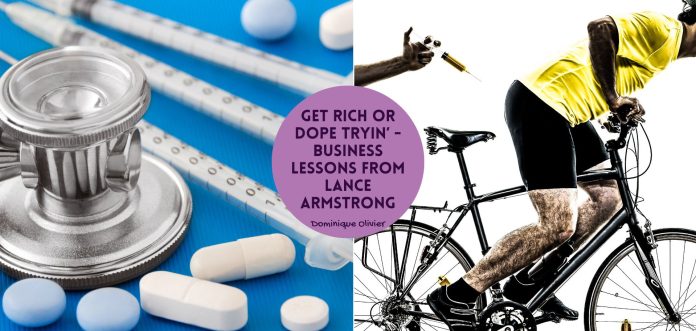Some people will do absolutely anything to win. In some instances, we call that determination. In others, we call it greed. Just how blurry is the line between those two things? Take a lesson from the most tested athlete in the world.
In the most spectacular case of nominative determinism that I’ve seen in ages, current men’s tennis world number one Jannik Sinner received an immediate three-month suspension from WADA (World Anti-Doping Agency) earlier this month. His crime? Two positive drug tests he had last year.
Tennis stars and fans alike are up in arms over this outcome, mostly due to the perceived leniency of the punishment and the convenient timing of the ban (the three months fall precisely between the Australian and French Opens, meaning Sinner will still be able to participate in both). Sinner’s ban also didn’t result from a hearing before an anti-doping tribunal or the Court of Arbitration for Sport, as has been the case with other tennis players who have received bans in the past. Instead, his suspension was the product of a “case resolution agreement”, also known as a negotiated settlement between WADA and Sinner.
While many are accusing WADA of favouritism, there are logical reasons why Sinner has come off comparatively lightly in this case. The tennis star tested positive for clostebol, a steroid banned by the World-Anti Doping Code, in March 2024. Sinner argued the banned substance entered his system after he received a massage from a physiotherapist in his entourage who had used a cream with clostebol to treat a cut on his own finger.
Both WADA and the International Tennis Integrity Agency accepted Sinner’s version of events and have labeled his transgression as an “unintentional doping offence”. Since athletes are held responsible for the negligence of their entourage, Sinner bears the punishment despite not being directly responsible for the mistake.
Drown out the noisy debate about convenient timing and back-door negotiations, and Sinner’s case is a story of negligence – an athlete paying the price for a careless mistake. Lance Armstrong’s story, on the other hand, was pure greed. His downfall wasn’t the result of a minor slip-up but a calculated, years-long doping scheme designed to dominate cycling at any cost. If Sinner’s suspension has sparked debate over fairness, Armstrong’s scandal exposed the ruthless pursuit of victory that can corrupt an entire sport.
Hope on a bicycle
In 1996, up-and-coming cyclist Lance Armstrong was fighting for his life. Diagnosed with metastatic testicular cancer that had already spread to his lungs and brain, his odds of survival were incredibly slim. But against all odds he beat it, and when he returned to cycling the following year, the world watched.
Armstrong dominated on his return, winning his first Tour de France and launching one of the most extraordinary comebacks in sports history. He started the Lance Armstrong Foundation, later renamed to the Livestrong Foundation, which has raised over $500 million in aid of cancer research. Over the next seven years, he made winning the Tour de France look routine, claiming seven consecutive titles and transforming himself into a symbol of resilience, a global inspiration, and the face of cycling itself.
His success helped propel cycling into mainstream popularity, drawing new fans to a sport that had long struggled for global recognition. Even after retiring on a career high at 33, Armstrong couldn’t stay away. He returned in 2008, still brushing off doping allegations and insisting he was ready to put in the extra work to compete at an elite level, even at 37.
ESPN followed his return closely, profiling him ahead of his first race back, the Tour Down Under, in January 2009. But if fans were expecting a triumphant comeback, they were in for a reality check. Armstrong finished a forgettable 27th out of 127 riders.
Questions kept swirling about whether he had ever raced a clean Tour de France, but Armstrong pressed on, lining up for the 2009 edition of the race. He finished third that July, which was not the fairytale return he might have hoped for, but still remarkable given that he was 38 and had spent three years away from the sport.
The fall of the idol
Before the 2010 Tour de France, Armstrong announced it would be his final race. But as he prepared for his last ride, a storm was brewing. His former US teammate Floyd Landis (himself stripped of a Tour de France title for doping) sent emails to cycling officials, admitting his own drug use and accusing Armstrong and other teammates of doing the same.
“I want to clear my conscience,” Landis told ESPN at the time. “I don’t want to be part of the problem anymore.”
Armstrong, as always, denied everything. He dismissed the accusations as baseless and insisted there was no proof. Seemingly unshaken, he raced in the 2010 Tour de France just months after the Landis revelations, finishing a lackluster 23rd. In press conferences around that time, he continuously referred to himself as “the most frequently tested athlete in the world”, and claimed to have been tested more than 500 times over the course of his career without a single positive result.
His second attempt at retirement didn’t shield him from the growing scandal. By 2011, more of his former teammates started speaking out, previewing the damning evidence they would ultimately provide in the US Anti-Doping Agency’s (USADA) case against him.
In October 2012, USADA released a scathing report that left no room for doubt: it proved that Armstrong had doped for most of his career. He chose not to fight the charges, and the consequences were swift and brutal. Every achievement from August 1998 onward was stripped from him, and he was banned from cycling for life.
Three months later, in a much-hyped sit-down with Oprah Winfrey, Armstrong finally confessed. The interview can only be described as flat and emotionless. Armstrong admitted to doping in every Tour de France he had competed in and won, and while he admitted that he knew that this was wrong, whether he truly regretted it remained unclear.
After his admission of guilt, Armstrong’s empire crumbled overnight. Every major sponsor cut ties with him, and he reportedly lost $75 million of sponsorship income in a single day.
In February 2017, a federal court ruled that a $100 million civil lawsuit against Armstrong (initiated by Floyd Landis on behalf of the US government) would go to trial. The case revolved around the US Postal Service, which had paid Armstrong and his team $31 million in sponsorship money between 2001 and 2004. The Department of Justice accused him of breaching his contract and committing fraud by repeatedly denying his doping.
Armstrong settled the lawsuit in April 2018, agreeing to pay the US government $5 million. It was far less than what was originally sought but still a costly reminder of his downfall.
Choose how you want to win
Armstrong’s story offers us more than a juicy sports scandal. It’s also a masterclass in what not to do in business. His calculated deception may have brought him years of dominance, but the price of cutting ethical corners was total ruin. The same applies to businesses and brands that prioritise short-term wins over long-term integrity. Fraud, false promises, and unethical practices may offer a temporary edge, but eventually, the truth surfaces. And when it does, the fallout can be swift and unforgiving.
Reputation is a company’s most valuable asset. It takes years to build and seconds to destroy. Armstrong spent over a decade crafting the image of a champion, a survivor, and an inspiration, only to see it unravel in a matter of months. Perhaps the best symbol of Armstrong’s tattered legacy is the rebranding of his foundation from the Lance Armstrong foundation to the Livestrong Foundation – a directional change that was made in 2012, when the USADA report was released. A CNN article from that year reported that many former supporters of the Livestrong Foundation were defacing their iconic yellow wristbands in protest. Some crossed out the “V” in “LIVESTRONG” to spell “LIE STRONG,” while others altered the lettering to read “LIVEWRONG”.
Sustainable success isn’t about how quickly you can get ahead, it’s about whether you can withstand scrutiny when it comes. And take it from Lance Armstrong – it always comes. The businesses that endure aren’t the ones that take shortcuts. They are the ones that build something rooted in integrity.
In the end, the greatest victory isn’t in fooling the world. It’s in never having to.
And as for Jannik Sinner – let’s just hope that the only dirty thing going on really was the cut on the physio’s finger. Armstrong’s story tainted the world of cycling and the same would happen in tennis.
About the author: Dominique Olivier

Dominique Olivier is the founder of human.writer, where she uses her love of storytelling and ideation to help brands solve problems.
She is a weekly columnist in Ghost Mail and collaborates with The Finance Ghost on Ghost Mail Weekender, a Sunday publication designed to help you be more interesting. She now also writes a regular column for Daily Maverick.
Dominique can be reached on LinkedIn here.




